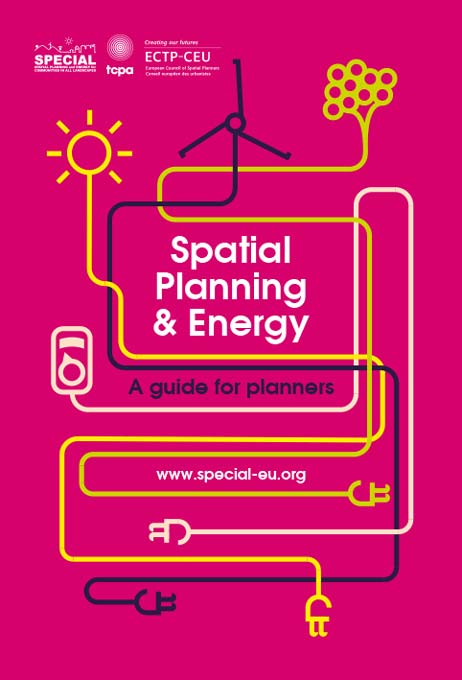A guide for planners: "Spatial Planning & Energy" ECTP-CEU - TCPA /2016

The SPECIAL Project
SPECIAL (Spatial Planning and Energy for Communities in All Landscapes) is a three year project, running from March 2013 to March 2016 and funded by Intelligent Energy Europe (IEE). It consists of a partnership of eight town planning associations (TPAs) in Europe and engages a wider network of planners across Europe through the European Council of Town Planners (ECTP CEU).
Spatial planners play a key role in developing energy strategies and the SPECIAL project was established with the aim of bridging the gap between energy action planning and spatial and urban planning. This is set in the context of working towards the EU’s 2020 climate change targets.
The SPECIAL project has collaborated with the ECTP-CEU to create this practical guide to energy and spatial planning. The ECTP-CEU has a unique and powerful network of town planning institutes across twenty two European countries. Its input has added its expertise and experience to help produce a guide that will help planners in the integration of spatial planning and energy across Europe.
Introduction
Planners across Europe are at the forefront of the creation of a low carbon future. As the challenges of climate change increase, the
dangers of flooding, extreme heat and drought are experienced more regularly across Europe. Spatial planning is the profession with
the most powerful ability to co-ordinate the many things that need to be done to ensure that the physical environment mitigates the
effects of climate change. It is often the most vulnerable in society who are most affected by climate change. Spatial planning provides a democratic process to reach decisions which, while not always popular, can help to safeguard the future of the planet and ensure that the well-being of the entire population is considered. Planners need to have the right skills and knowledge to deal with the challenges presented by climate change. The case studies in this guide illustrate what can be achieved through an integrated and robust approach to spatial planning for energy. This pan-European guide for planners has been created to help planners achieve the skills which they will need to maximise their contribution towards a sustainable and low carbon environment.
dangers of flooding, extreme heat and drought are experienced more regularly across Europe. Spatial planning is the profession with
the most powerful ability to co-ordinate the many things that need to be done to ensure that the physical environment mitigates the
effects of climate change. It is often the most vulnerable in society who are most affected by climate change. Spatial planning provides a democratic process to reach decisions which, while not always popular, can help to safeguard the future of the planet and ensure that the well-being of the entire population is considered. Planners need to have the right skills and knowledge to deal with the challenges presented by climate change. The case studies in this guide illustrate what can be achieved through an integrated and robust approach to spatial planning for energy. This pan-European guide for planners has been created to help planners achieve the skills which they will need to maximise their contribution towards a sustainable and low carbon environment.

